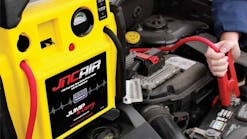OEMs and the independent aftermarket: New technology calls for a new spirit of cooperation
Hardly a day goes by without some car manufacturer announcing plans for a new hybrid vehicle or something even more revolutionary. Just yesterday, our daily eNewsletter reported that automakers are developing built-in biometric sensors to improve driver safety.
During the aftermarket trade shows last month – ASWR, AAPEX and SEMA – many tool and equipment companies introduced diagnostic solutions to help shops meet the challenge of changing automotive technologies, be it hybrids, electronics, ion lithium batteries, etc. The shows included several education session devoted to new automotive technologies.
These changes are exciting, but at the same time, the OEMs are recognizing that these various technologies are creating big challenges for their aftermarket needs. The aftermarket of the future will have to be much more professional in every way; techs must be better trained, shops need better tools and better communication is needed between aftermarket shops and their customers.
One OEM, Toyota Motor Sales USA, recently hired a research firm to study the impact of new automotive technology and what it means to the automotive aftermarket. Toyota and other OEMs recognize that new technology, for all its benefits, increases the information demands on the aftermarket and hence the aftermarket industry’s ability to service vehicles effectively post warranty.
I had a chance to see this proprietary research, and it certainly was an eye opener.
The research examined the differences between the capabilities and service readiness of OEM dealer and independent repair shops.
The most interesting finding from this very thorough research – some of which Toyota presented at AAPEX – is the fact that OEM shop technicians have to wait longer to use scan tools than independent repair shop technicians. This finding will certainly get the attention of OEMs if it hasn’t already.
The research also found that some OEMs outsource the service information authoring
function, and this can create disconnects and inefficiencies, contrary to intended goals.
It didn’t take an exhaustive study to make OEMs aware they need to reconsider their aftermarket capabilities. But the study did do a lot to quantify the challenges they face.
OEMs have long recognized the need for more efficient information delivery systems. This was the purpose of the National Automotive Service Task Force (NASTF), an umbrella organization supported by OEM and aftermarket organizations to improve the availability and accessibility of automotive service information, service training, diagnostic tools and equipment. The not-for-profit NASTF has gained more support from nearly all automotive industry sectors over the years, and this is a very positive development for both the OEMs and the independent aftermarket.
Skip Potter, executive director of NASTF, addressed both the ASRW and AAPEX attendees on the organization’s plans and progress.
Many positive things are happening in the aftermarket. Independent shops have a lot of challenges and opportunities as automotive technology creates a new set of skill, manpower and organizational needs.
To learn more about NASTF, go to www.nastf.org.


